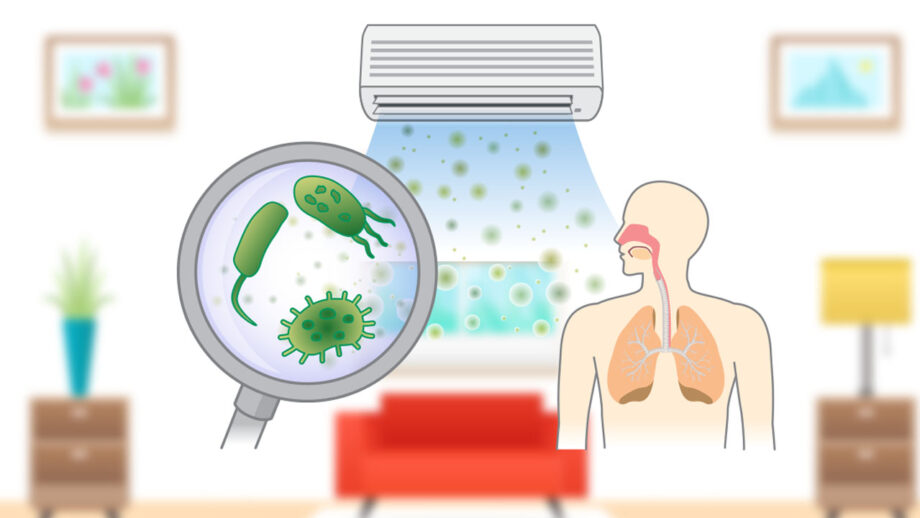Biological pollutants refer to any solid or liquid contaminants that are derived from any form of organic life.
We are frequently exposed to these pollutants in the indoor environment, including microorganisms such as bacteria, viruses, mold spores, pollen, dust mites, animal dander, etc.
The presence of biological pollutants in the indoor environment can lead to several adverse health effects, including irritation in the eyes, nose, and throat, headaches, infections, allergic reactions, damage to your respiratory tract, skin rashes. They can also cause asthma symptoms, including wheezing, difficulty breathing, and chest tightness.
Biological Pollution In Schools
The main side effects of biological pollutants in schools are adverse health issues such as allergies and asthma.
With regards to allergic reactions, studies have shown that several students experience sneezing, stuffy noses, watery eyes, and other uncomfortable symptoms due to their allergies. An estimated 24 million school-aged children struggle with allergies every year.
The majority of these children are unaware that they have an allergy until they enter a school environment where allergens such as mold spores can trigger an acute reaction. In some cases, students end up needing medication during class or seek emergency care from a doctor outside of school hours.
Impact Of Biological Pollution In Your Home
Common symptoms include respiratory illnesses and certain skin problems, but there is evidence that long-term exposure to biological contaminants can lead to more severe health issues.
Several studies have linked high levels of biological pollution in homes with an increased risk for childhood asthma.
In addition, ongoing exposure to mold or other fungal growth in buildings has been linked with chronic inflammation and increased risk for respiratory problems like asthma and other illnesses. In general, experts believe it’s best to prevent exposure whenever possible. Keeping surfaces clean and using proper HVAC systems are helpful ways to maintain a healthy home environment.
Side Effects Of Biological Pollution In Your Office
Bacteria, viruses, molds, fungi, and spores can cause various health problems in office workers, including respiratory infections and illness.
Some fungi produce mycotoxins which are released into the air. Some airborne bacteria lead to food poisoning. For example, staphylococci bacteria can survive for more than an hour once released into office environments after being in people’s noses or throats.
Staphylococci is a major cause of sinusitis, boils, and skin infections. When these bacteria get released into offices, others can inhale them, leading to these same illnesses.
How To Minimize The Effect Of Biological Pollution Indoors
- Keep fresh air circulating indoors by opening windows during the daytime and leaving them closed at night.
- Clean all household filters regularly (remember to do those in your bedroom, office, and kitchen) with a vacuum cleaner or by cleaning them with water.
- Seal cracks in buildings’ foundations; these provide an easy entry point for pests and feces into your home.
- Make sure you dispose properly of both human waste and sewage waste by contacting local government agencies for advice on doing so correctly.
- Don’t store any perishable food near sources of warmth (such as near a heater).
- Consider installing an electrostatic precipitator system. Electrostatic precipitators contain charge plates that cause dust particles in a room’s air to stick together before pulling towards a fan, where they are collected using HEPA-filtered bags.
- Protect yourself with a high-filtration face mask.

